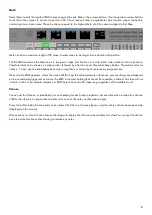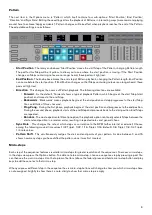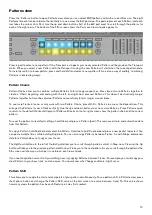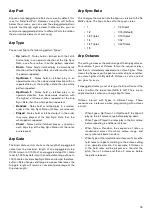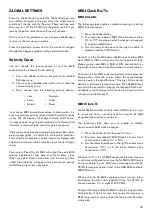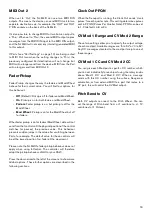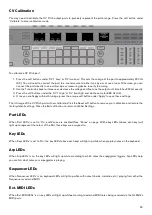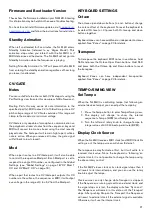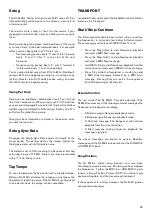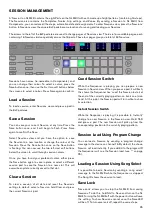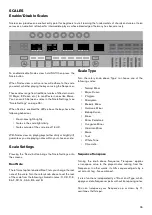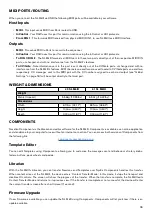
17
Arp Velocity
Arp note Velocity can be between 1 and 127 (standard for
MIDI velocities) or ‘Played’ (default) .
When set to Played, the output notes from the arpeggiator
will inherit the velocities of the notes you physically played .
When set to a value of 1-127, the output notes from the
arpeggiator play at a fixed velocity as specified by this
setting . For example, if set to ’65’, all notes heard will have a
velocity value of 65 .
Arp Length
This sets the length of the Arp pattern, measured in steps .
By default, the Arp loops through 16 steps, but you can
make it shorter (from one to 15 steps) . The ‘Arp Sync Rate’
determines the length of a step (1, 1/2, 1/2 Triplet etc .) .
You will see your Pattern on the 8x2 pad area, where each
pad represents a single step in the Pattern .
Arp Pattern
Finally, the Arp Pattern feature lets you customise the rhythm
of your arpeggios . After pressing the Arp button, each pad
will represent a step in the arpeggio pattern . You can then
toggle a step on or off by pressing its corresponding pad,
thus altering your pattern’s rhythm . A pad will light brightly
when the step is set to play, and dimly when the pad will
not play . A white cursor moves across the pads as the
arpeggiator plays .
This resulting rhythm only affects the timing of the played
notes and does not change the order they play .
Additional Arp Notes
While using Up/Down 1 with an octave range greater than
one, when the arp moves down, reducing the octave range
to one will cause the Arp to continue falling through all the
octaves until it reaches one . At this point it will stay within the
1-octave range . If moving in the up direction, the arpeggiator
will reset to the first octave after it has completed all the
notes in the sequence within the current octave it is playing
in .
When you use Up/Down 2, if the top/bottom note is
released after it has played once, Arp will immediately switch
direction and play the next highest/lowest note only once
and continue in that direction . This behaviour maintains
timing if you remove the top note replace it with another note .
When switching between directional arpeggiator types
during playback, Arp will not reset position but will continue
moving in the same direction (if supported by the new Type)
until it reaches a limit . For example, if switching from Down
type to Up/Down one Type, the arpeggiator will continue
moving down until it reaches the lowest note .
Arp Chance
You can set the probability of a step playing in an arp
sequence for any of the eight arpeggiators . To enable this,
go to the Arp Settings Menu and using the encoders you can
change the arp step to a chance between 0% and 100% .
0% giving that step no chance of triggering and when set to
100% that step will always play .






